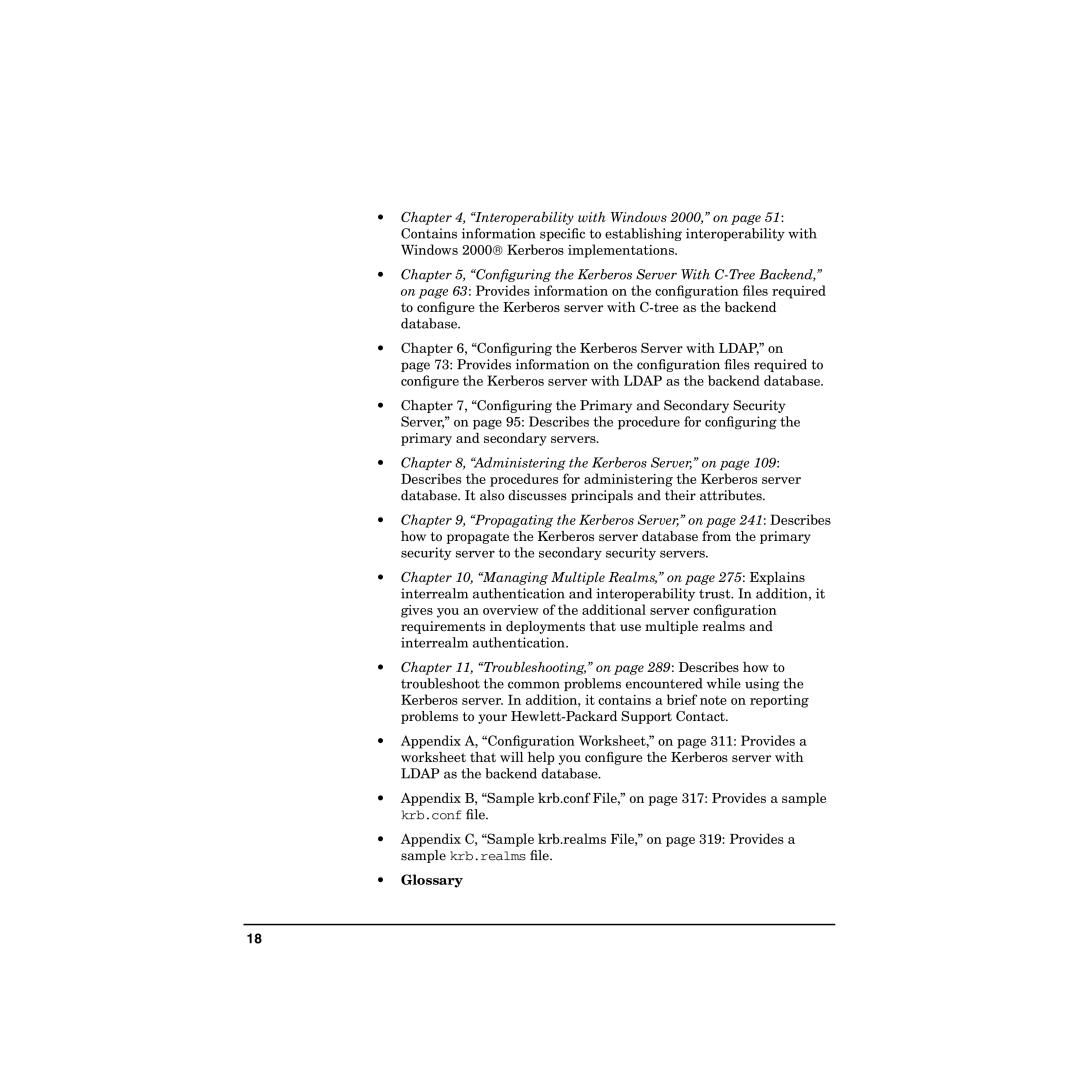•Chapter 4, “Interoperability with Windows 2000,” on page 51:
Contains information specific to establishing interoperability with Windows 2000 Kerberos implementations.
•Chapter 5, “Configuring the Kerberos Server With
•Chapter 6, “Configuring the Kerberos Server with LDAP,” on
page 73: Provides information on the configuration files required to configure the Kerberos server with LDAP as the backend database.
•Chapter 7, “Configuring the Primary and Secondary Security Server,” on page 95: Describes the procedure for configuring the primary and secondary servers.
•Chapter 8, “Administering the Kerberos Server,” on page 109: Describes the procedures for administering the Kerberos server database. It also discusses principals and their attributes.
•Chapter 9, “Propagating the Kerberos Server,” on page 241: Describes how to propagate the Kerberos server database from the primary security server to the secondary security servers.
•Chapter 10, “Managing Multiple Realms,” on page 275: Explains interrealm authentication and interoperability trust. In addition, it gives you an overview of the additional server configuration requirements in deployments that use multiple realms and interrealm authentication.
•Chapter 11, “Troubleshooting,” on page 289: Describes how to troubleshoot the common problems encountered while using the Kerberos server. In addition, it contains a brief note on reporting problems to your
•Appendix A, “Configuration Worksheet,” on page 311: Provides a worksheet that will help you configure the Kerberos server with LDAP as the backend database.
•Appendix B, “Sample krb.conf File,” on page 317: Provides a sample krb.conf file.
•Appendix C, “Sample krb.realms File,” on page 319: Provides a sample krb.realms file.
•Glossary
18
